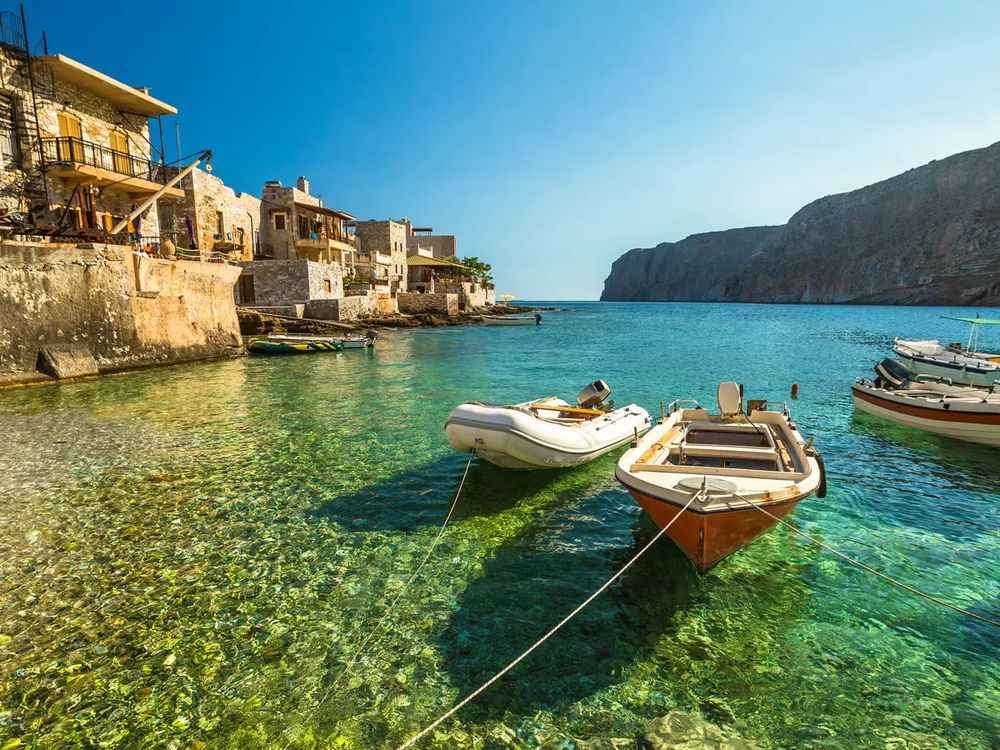Aghios Georgios castle: The medieval castle of Aghios Georgios, mostly known as “Kastro” (which means castle) is located at the southwest of Argostoli, in Peratata village, in Livathos region. The castle owes its name to the large church of Aghios Georgios, which is situated in the region and is celebrated glamorously. It was built in the 13th century to fortify the island’s old capital, which was housed here until 1757 A.D.
The castle includes loopholes, observatories and cannon positions. Today, you can see the tower called “Old Fortress”, as well as part of the walls, underground arches, the throne of the Venetian Lord and a catholic church, where the nobles of Kefalonia were buried.
Ancient Krani: The ruins of Ancient Krani are situated in a green area on the bank of Koutavos lagoon, opposite Argostoli, the island’s capital. Krani was one of the four most prominent towns on the island during the Mycenean era, as the Greek historian Thucydides and Herodotus have indicated. It was independent and had its own currency. Its residents were mostly farmers and had some marine activities, too.
Excavations cast light upon ruins of buildings, walls and a doric temple devoted to Demetra, the Greek goddess of agriculture, dated back to the 7th and 6th century BC. The site is being prepared in order to start accepting visitors and part of the findings is exhibited at the Archaeological Museum of Argostoli.
Ancient Panormos: According to findings dated from Neolithic and Mycenaean period, Fiskardo was the port of Ancient Panormos. Here, have also been discovered stone tools of Palaeolithic era.
Ancient Sami: Ancient Sami has been discovered at the north of current Sami, built at the foot of Aghioi Fanendi and Paleokastro hills. According Thucydides, Sami was one of the four prominent cities of Kefalonia. It was a prosperous and powerful town, founded since the Palaeolithic times. During classical and Hellenistic times Sami flourished because of the growth of trade and the exploitation of mount Ainos’s timber.
Excavations have brought to light parts of the two citadels (acropolis) built during the Hellenistic period, the Cyclopean fortification walls of the ancient city, as well as parts of an ancient aqueduct, traces of an ancient theatre, a part of a Roman edifice known as “Rakospito” and three tombs from the 3rd century B.C. Numerous findings of the excavations are on display in the Archaeological Museum of Argostoli.
Assos castle: The castle of Assos on Assos’s peninsula, in north Kefalonia, was built by the Venetians in the late 16th century. It is said that, in 1585, the locals asked Venetians to build another castle, besides Aghios Georgios castle, in order to protect the city from pirate raids. Unfortunately, the establishment of the locals at Assos peninsula was difficult and, as a result, the castle has been decayed. Until 1953, the castle housed prisons.
Here, you can still admire part of the walls and the arched entrance gate, the ruins of the Venetian High Commissioner’s house, the barracks and the church of Aghios Markos. From here, you can also see the wonderful view of the sea and the lovely bay of Myrtos beach.
Poseidon temple at Poros: In the ancient times, ships heading to Italy, Sicily and Malta were stopping at the beautiful cove of Poros cape. At the same region, a temple has been discovered, devoted to Poseidon, the Greek god of the sea. You can see its mosaics at the Archaeological Museum of Argostoli.
Roman villa: It was discovered at Skala region, at the south of Kefalonia, in 1957. Built in the 3rd century B.C., it was decorated with great mosaics and thermal baths. According to the researches, the owner was a wealthy Roman. Also, at Skala region, ruins of a doric temple of god Apollon of the 5th century has been discovered.
Tomb at Tzanata: The excavations on the outskirts of Tzanata, near Poros village, in the south of Kefalonia, have cast light upon a great dome-shaped (vaulted) tomb dated from the Mycenaean period, with valuable findings, like jewellery. This royal tomb is the largest (6.80m. in diameter) and better preserved on the island, as well as in Western Greece. There have been claims that this is the burial place of Odysseus himself, as this tomb’s type was used to bury Greek royalty in ancient times.
